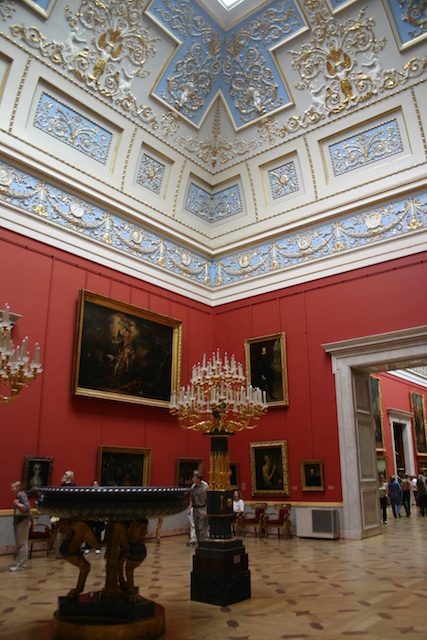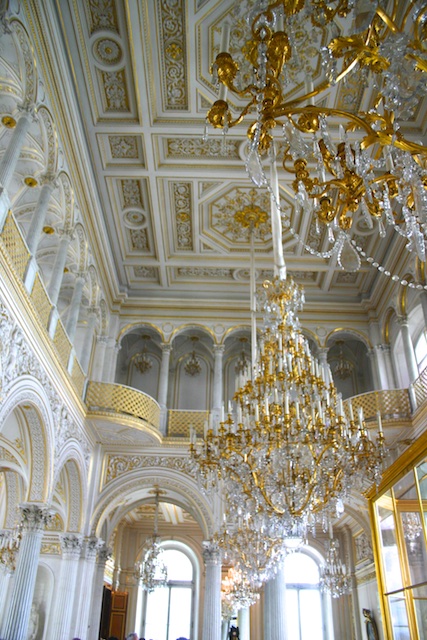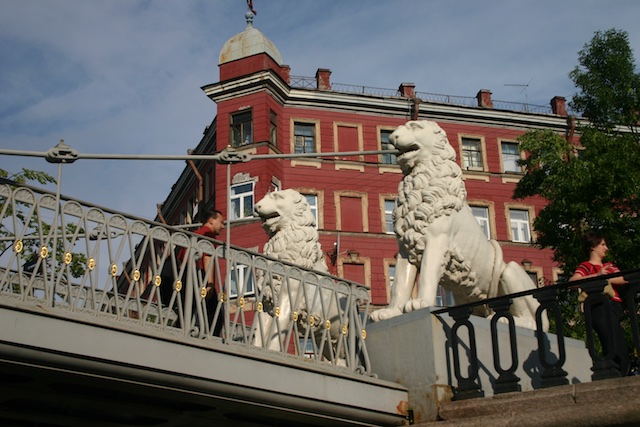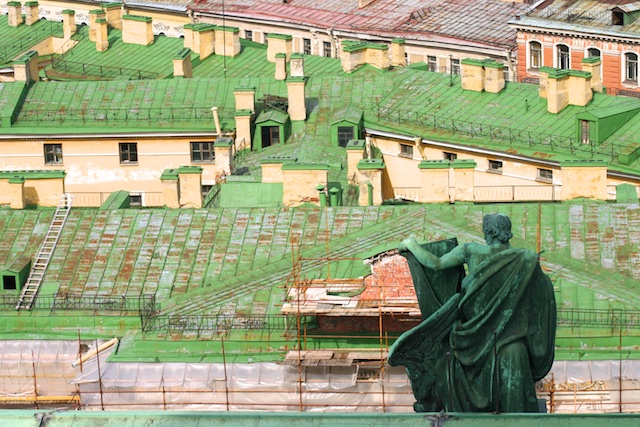Darkness had descended on the magical city of St. Petersburg
and a soft rain was falling as we set off for an exclusive evening tour of the Hermitage Museum, ten kilometres from the vast sea port where our cruise ship, Holland America’s Zuiderdam was securely docked for our overnight in St. Petersburg.
Situated on the Gulf of Finland, where the Neva River empties into the easternmost arm of the Baltic Sea, St. Petersburg was founded by Peter the Great (1672 – 1725) in 1703, replacing Moscow as Russia’s capital city. Among its many opulent palaces, churches and museums, perhaps the most-visited is the Winter Palace. Built between 1754 and 1762 for Empress Elizabeth, the daughter of Peter the Great, who unfortunately died before the palace’s completion leaving only Catherine the Great and her successors to enjoy the sumptuous interiors of Elizabeth’s home, where together with its adjacent buildings and more recent additions –- houses over 3 million items of the Hermitage Museum collection.
From the exterior, the Hermitage Museum resembles a sumptuous Baroque wedding cake, its malachite-green façade ornamented with statues and massive, icing-sugar white columns, each embellished with gold bands and capitals.
Once inside the Winter Palace entrance, we climbed the Jordan staircase, with its marble stairs and balustrade, to visit various State rooms – each more luxurious than the next. Entering the 1812 Gallery, that was created in 1826 to celebrate Russia’s victory over Napoleon, was like stepping into the pages of Leo Tolstoy’s epic novel, War and Peace. The red walls of the gallery boasted portraits of over 300 Russian generals, arranged five rows deep, while huge equestrian paintings of Alexander I and Wilhelm III of Prussia bookended the room.
Equally impressive – but, in contrast, more feminine and ornate – was the Pavilion Hall, its white walls lined with pairs of tall glass doors that faced onto a lighted courtyard. As in many of the other galleries, a massive marble colonnade rose to the ceiling, while ornate gold and crystal chandeliers sparkled overhead like so many diamonds. Along one wall, an enormous mechanical Peacock Clock held pride of place. A gift from one of Catherine the Great’s many lovers, the exquisite golden peacock still sings, fans out its magnificent tail and rotates on its elaborate stand every Wednesday at 1:00 p.m.
Catherine the Great began her collection in 1764 by purchasing 225 canvasses by various Dutch and Flemish masters, supplementing the paintings previously acquired by Peter the Great. Several galleries boasted spectacular paintings by Rembrandt, Rubens and Van Dyck, as well as such Italian masters as Fra Angelico, Botticelli, Raphael, Da Vinci and Del Sarto. The list of masterpieces goes on and on….
Apart from its magnificent collection of paintings, sculpture and other artifacts, the Hermitage Museum is an homage to craftsmanship in its many forms. Some galleries boasted floors, wall panels and cornices of inlaid wood, in intricate patterns, often embellished with gold and precious minerals, while other rooms were lit from above by elaborate skylights.
Given my love of art history, I could have spent several days at the Hermitage – and considerably more time in historic St. Petersburg itself – but I pinch myself to think that I was there at all.




















Comments
 Geeth
Geeth
Authorwow…Great article who write everything that I need. I love this blog. In the period of Russia tour, I will definitely visit this place.
 Gregory George
Gregory George
AuthorThanks again! The Hermitage is a splendid if daunting visit. So much to see!